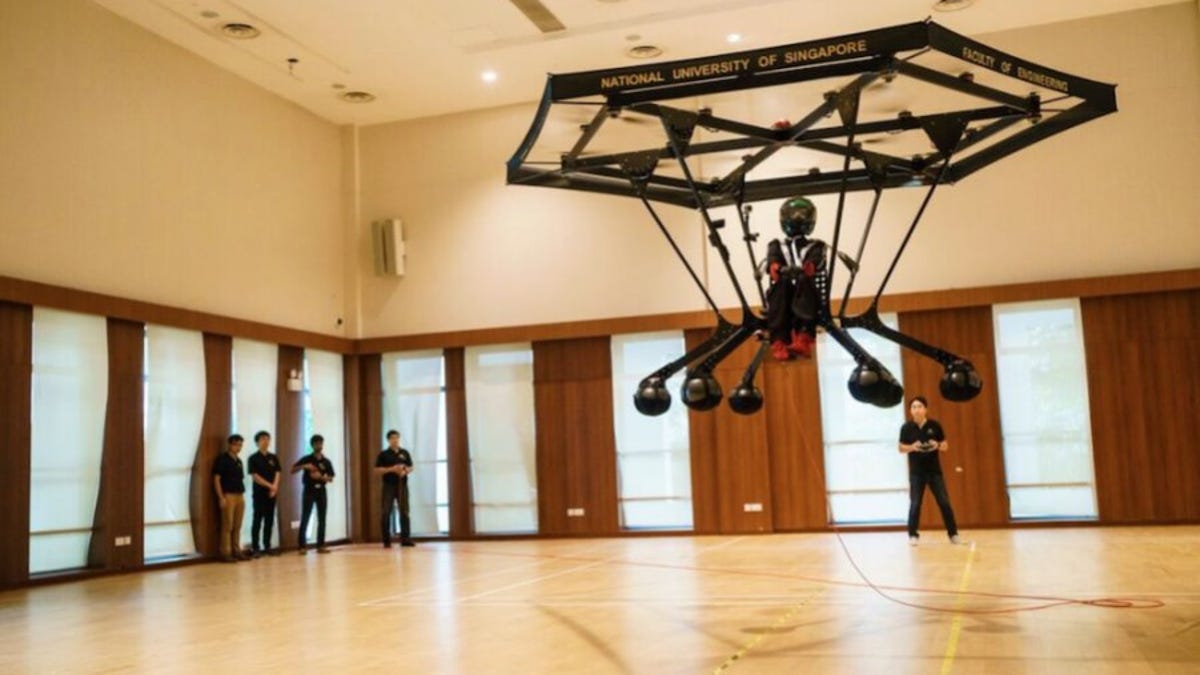Students build battery-powered personal flying machine
A team of students at the National University of Singapore has successfully built and flown a 24-propeller personal copter.
The day approaches, slowly but surely, when we can all sail gracefully over the full moon, a la Elliott and E.T. In the mean time, we have the latest experimental personal helicopter from Singapore.
A team of students at the National University of Singapore took a year to build the Snowstorm, a copter prototype capable of carrying a single pilot weighing up to 70 kilograms for up to five minutes.
The copter was created under the university's FrogWorks program, which engages students in the study and creation of clean leisurecraft. It's not designed for transportation. Rather, the team envisions it being used in, say, an indoor leisure centre, where riders can experience the joy of flight in a safer environment.
"A common trope in popular science fiction is the projection of humans flying on our own -- think the Jetsons, or even Back to the Future. NUS' Snowstorm shows that a personal flying machine is a very real possibility, primarily as a means to fulfill our dreams of flying within a recreational setting," said Dr Joerg Weigl, one of two supervisors of the project.
The team first built and tested a one-sixth scale prototype before starting work on the full-scale copter.
Snowstorm is built around on a large, lightweight aluminium and carbon fibre hexagonal frame with Teflon ropes, which supports 24 motors. Each of these motors drives a 76 centimetre-diameter, 2.2kW propeller. The pilot's seat at the centre of the configuration has a five-point safety harness and is supported by six legs tipped with inflatable balls to cushion landing.
The pilot can control thrust, pitch, yaw and roll, and a number of presets make the craft easy to use for new flyers, with settings for altitude hold, loiter and position. A ground switch can also bring the craft to landing if the pilot loses control for any reason.
"Recent advances in motors and battery technology has made it possible for us to literally take to the skies," said Associate Professor Martin Henz, who also supervised the project.
"The NUS team will continue to fine-tune Snowstorm, working on mechanical safety measures, propeller and motor configurations, and control software and hardware to achieve the high levels of safety, simplicity and performance required for recreational use by the general public."


